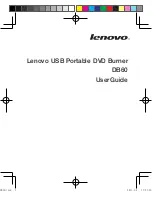
184
System Manual – MOVIDRIVE® compact Drive Inverters
4
Description of Applications
Project Planning
4.3
Description of Applications
Inverter selection
The large number of different drive applications can be divided into five categories. The
five categories are listed below together with the recommended SEW inverter. The as-
signment is based on the required setting range and the resulting control process.
1. Drives with a base load and a speed dependent load, such as conveyor drives.
•
Low requirements on the setting range (motor without encoder)
– MOVIDRIVE
®
compact
MCF4_A (VFC)
•
High requirements on the setting range (motor with encoder)
– MOVIDRIVE
®
compact
MCV4_A (VFC-n-CONTROL)
2. Dynamic load, e.g. trolleys; brief high torque demand for acceleration followed by low
load.
•
Low requirements on the setting range (motor without encoder)
– MOVIDRIVE
®
compact
MCF4_A (VFC)
•
High requirements on the setting range (motor with encoder)
– MOVIDRIVE
®
compact
MCV4_A (VFC-n-CONTROL)
•
High dynamic properties required (asynchronous or synchronous servomotor)
– MOVIDRIVE
®
compact
MCV/MCH4_A (CFC)
– MOVIDRIVE
®
compact
MCS/MCH4_A (SERVO)
3. Static load, e.g. hoists; mainly steady high static load with overload peaks.
•
Low requirements on the setting range (motor without encoder)
– MOVIDRIVE
®
compact
MCF4_A (VFC)
•
High requirements on the setting range (motor with encoder)
– MOVIDRIVE
®
compact
MCV4_A (VFC-n-CONTROL)
– MOVIDRIVE
®
compact
MCV/MCH4_A (CFC)
– MOVIDRIVE
®
compact
MCS/MCH4_A (SERVO)
4. Load falling in inverse proportion to speed, e.g. winding or coil drives.
•
Torque control (asynchronous or synchronous servomotor)
– MOVIDRIVE
®
compact
MCV/MCH4_A (CFC&M-CONTROL)
– MOVIDRIVE
®
compact
MCS/MCH4_A (SERVO&M-CTRL)
5. Variable torque load, e.g. fans and pumps.
•
Low load at low speeds and no load peaks, 125 % utilization (I
D
= 125 % I
N
) (motor
without encoder)
– MOVIDRIVE
®
compact
MCF4_A (VFC)
Project planning
for trolleys
The motor load in dynamic sections determines the motor peak power that has to be
configured. The thermal load determines the required continuous motor power. The
thermal load is determined on the basis of the travel cycle, with the load from accelera-
tion and deceleration as well as the standstill times. The speed characteristic is a signif-
icant factor in determining the self-cooling of the motor. See also "Motor selection exam-
ples" on page 190.
Содержание MOVIDRIVE compact MCH41A
Страница 2: ...SEW EURODRIVE Driving the world...
Страница 432: ......
















































